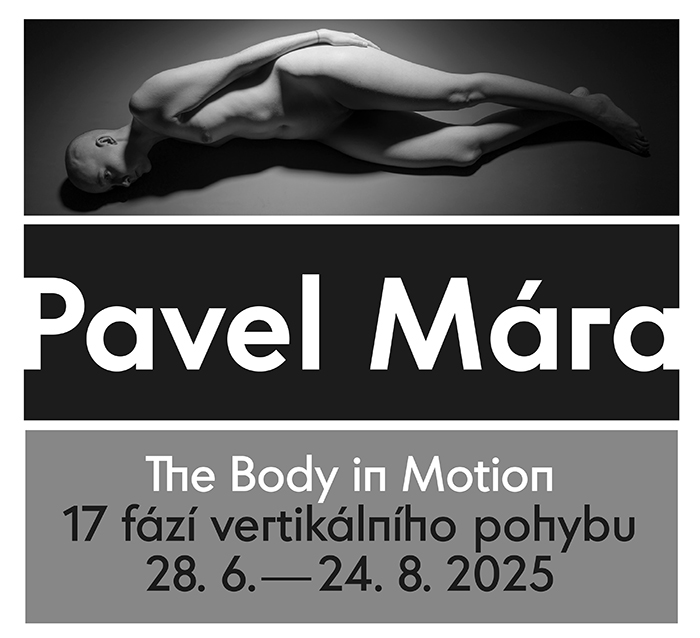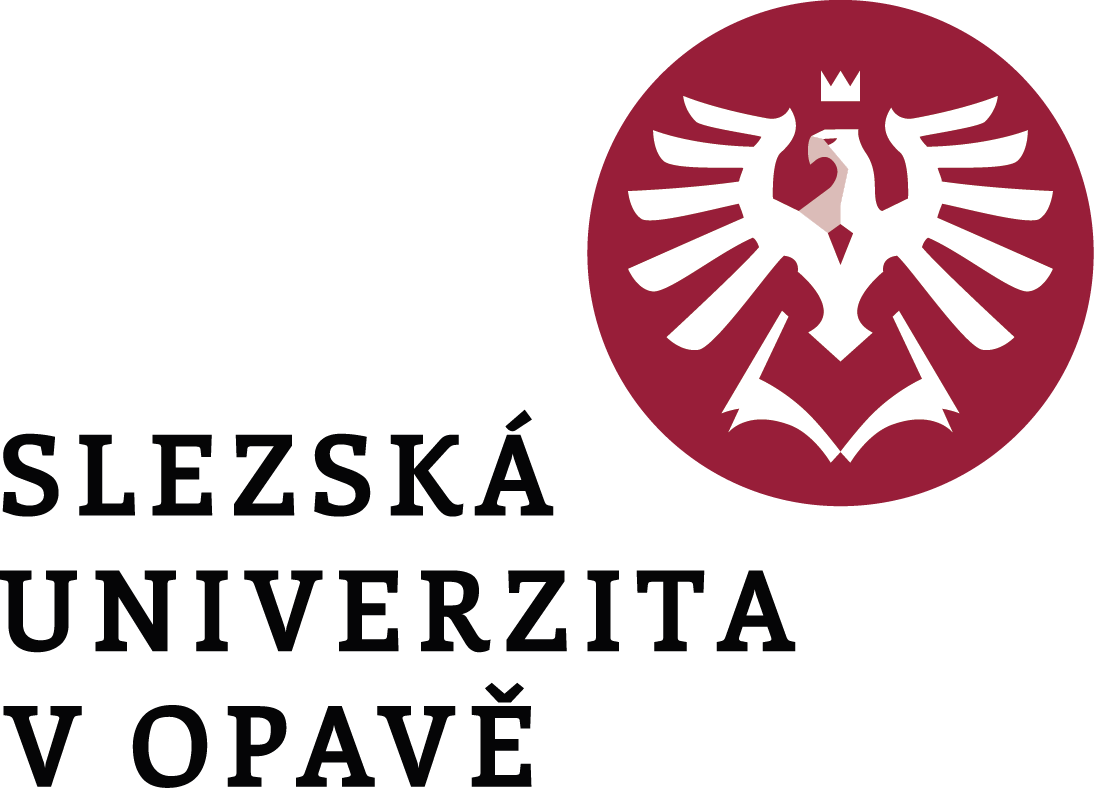Výstava fotografií Pavla Máry The Body in Motion v Praze

Pavel Mára: The Body in Motion
17 fází vertikálního pohybu
Galerie. Kaple. Holyně
Kaple sv. Jana Křtitele
Náměstí Pod lípou, Praha 5
28. 6. – 24. 8. 2025
Otevřeno: soboty, neděle a svátky 15–17 hod.
Vernisáž 26. 6. v 18 hod.
Výstava fotografa Pavla Máry v kapli sv. Jana Křtitele navazuje na jeho expozici v rámci přehlídky Per aspera ad astra na zámku v Rožmitále pod Třemšínem, kde v létě 2024 vytvořil site specific instalaci patnáctiprvkové černobílé fotografie Hlava G. Jednalo se o první ukázku z autorova cyklu Mechanické portréty, na kterém pracuje už deset let a jímž volně navazuje na seriální fotografii v tradici otevřené v 19. století fotografem a vynálezcem Eadweardem Muybridgem.
Fotografie ležícího ženského aktu The Body in Motion (2024), připravená pro galerii v Holyni, čerpá ze stejné energie a stejně také osciluje na hraně výtvarného a realistického zobrazení. Obsahuje dvacet jedna rozvíjejících se fází (na první pohled od sebe téměř nerozpoznatelných), z nichž Mára použil v daném prostoru sedmnáct prvků. Jde o pás samostatných obrazů téměř životní velikosti, který prochází po zemi středem galerie a stoupá po zadní stěně ke klenbě vzhůru.
Jsou to černobílé obrazy zbavené narativního obsahu, levitující v čase, jejichž repetitivnost v nás vzbuzuje – stejně jako hudba minimalistů (Reich, Riley, Glass) „v proměně pocit návratu“. Jsou definovány balancí mezi precizností a intuicí, mezi tradicí a transformací. Jejich esencí je světlo, generující linie a tóny snímaného objektu. Vznikaly s důrazem na záměrnost (jako ostatně celé Márovo dílo), jednotlivé fáze „vyrůstaly“ jako dům, patro po patru.
Technika procesu snímání je v daném případě určující. Horizontální a vertikální posuny fotoaparátu, které autor využíval již ve svých triptyších (např. Triptychy, 1990–1993, 2007–2009 a Rodina – triptychy, 1991, 2011), jsou zde zastoupeny „jízdou“ kamery vzhůru, aniž by přitom docházelo ke změně svícení či pohybu modelu. Přesto se tu světlo proměňuje a tělo otáčí, a je jen na nás, zda této iluzi podlehneme.
Radana Ulverová
Profesní orientace Pavla Máry (1951) je vymezena fotografií jako médiem, které ho fascinuje již od jeho studií na Střední průmyslové škole grafické v Praze a poté na FAMU, kde vystudoval nejprve kameru a externě pak v letech 1977–80 obor Umělecká fotografie. Od roku 1983, kdy poprvé vystoupil se svou prací na veřejnosti, měl více než padesát samostatných výstav doma i v zahraničí a zúčastnil se mnoha významných kolektivních prezentací. Kromě autorské tvorby, založené na inovativních postupech a vizualitě čistých obrazových forem, kterou systematicky rozvíjí v uzavřených cyklech (nejvíce frekventované jsou v jeho díle portréty a akty založené na proměnách perspektivy a využití světla), se od roku 1996 věnuje i pedagogickému působení na Institutu tvůrčí fotografie Slezské univerzity v Opavě. Na české fotografické scéně zůstává solitérem a utváří své vlastní estetické universum.
Pavel Mára: The Body in Motion
17 phases of vertical motion
Galerie. Kaple. Holyně
The Chapel of St John the Baptist
Náměstí Pod lípou, Praha 5
28 June to 24 August 2025
Open: Saturdays, Sundays, and holidays, 3 pm–5 pm.
Private view: 26 June at 6 pm.
Exhibition of photographer Pavel Mára in the Chapel of St John the Baptist follows on from his exhibition as part of the Per aspera ad astra show at the manor house Rožmitál pod Třemšínem, central Bohemia, where, in summer 2024, he created a site-specific installation of fifteen-part black-and-white photographs, called Head of G. This was the first example of Mára's Mechanical Portraits series, which he has been working on for ten years now and follows on loosely from serial photography in the tradition begun by the photographer–inventor Eadweard Muybridge in the nineteenth century.
Mara's photograph of the reclining female nude, The Body in Motion (2024), prepared for the gallery in Holyně, draws on the same energy and also oscillates on the boundary between artistic and realistic representation. It comprises twenty-one developing phases (at first almost indistinguishable from each other), of which Mára used seventeen elements in this space. It constitutes a strip of autonomous, almost life-size pictures, which moves along the ground through the centre of the gallery and rises up along the back wall to the vaulting above.
These are black-and-white pictures stripped of narrative content, levitating in time, whose repetitiveness – like the music of minimalists (such as Reich, Riley, and Glass) – awakens in us, ‚in the transformation, the feeling of return‘ . They are defined by the balance between precision and intuition, tradition and change. Their essence is light, generating the lines and tones of the photographed object. They were made with an emphasis on intentionality (as in all Mára's work, for that matter); the individual phases ‚have grown upwards‘ like a house, floor by floor.
What is decisive in this instance is the method of taking the picture. The horizontal and vertical shifts of the camera, which Mára had already made full use of, for example, in Triptychs (1990–93, 2007–09), and Family–Triptychs (1991, 2011), are represented here by the camera ‚riding‘ upwards, without, however, bringing about a transformation in the lighting or the motion of the model. Nevertheless, the light does change and the body turns, and it is only up to us whether we submit to this illusion.
Radana Ulverová
The career of Pavel Mára (b. 1951) has been defined by photography, a medium that has fascinated him since he was a student at the Secondary School of Graphic Design in Prague and then at the Film and Television School of the Academy of Performing Arts (FAMU), where he trained as a cameraman and then as an external student of art photography from 1977 to 1980. Since he first publicly showed his work in 1983, he has had more than fifty solo exhibitions at home and abroad, and has participated in many important group exhibitions. In addition to his art photography, based on innovative approaches and purely visual forms, which he has systematically developed in completed series (most often portraits and nudes with changed perspective and the full use of light), he has, since 1996, also devoted himself to teaching at the Institute of Creative Photography (part of Silesian University in Opava). On the Czech photographic scene, he remains unique, creating his own aesthetic universe.
««« Předchozí text: Fotografové Zatloukal, Zawada a Hajdučík se v opavské galerii KUPE představí na výstavě O čem sní kluci?
Následující text: Festival Paradajs Foto Fest v Bánské Štiavnici s výstavami pedagoga ITF a studentů ITF »»»
0




